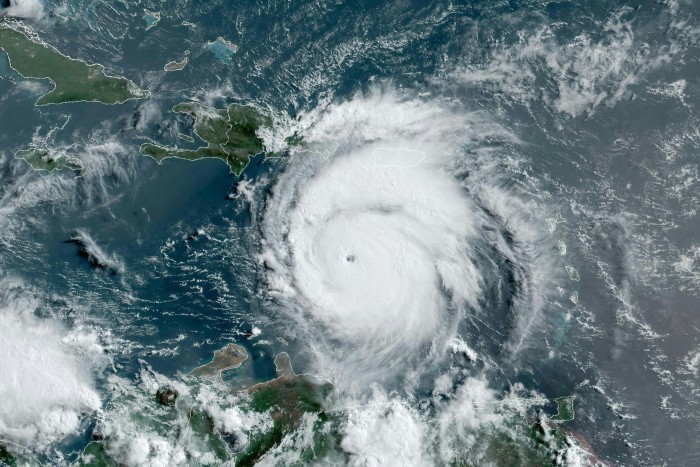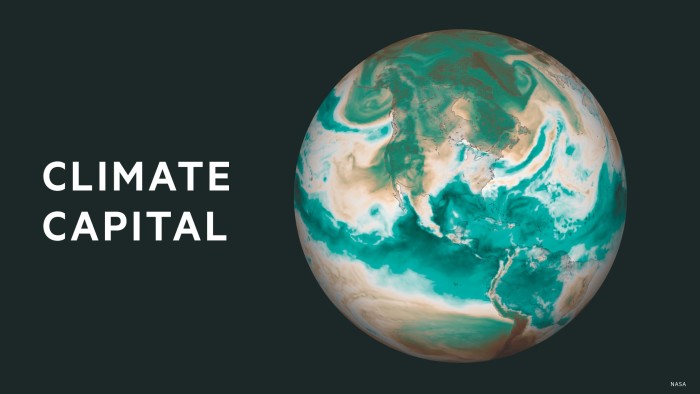
Unlock the Editor’s Digest for free
Roula Khalaf, Editor of the FT, selects her favourite stories in this weekly newsletter.
Hurricane Beryl became the earliest hurricane on record to develop into a category five storm, meaning its winds and sea surges could prove catastrophic, as warming oceans fuelled destruction across the south-eastern Caribbean.
Forecasters said it was expected to bring “life-threatening” winds and storm surges to Jamaica on Wednesday before hitting the Cayman Islands.
Beryl made landfall on Monday on Carriacou, an island that is part of Grenada, as well as hitting St Vincent and the Grenadines, leaving several dead and causing widespread damage.
Simon Stiell, the head of the UN’s climate change arm who is from Carriacou, said his homeland had been “hammered by Hurricane Beryl”.
“It’s clear that the climate crisis is pushing disasters to record-breaking new levels of destruction,” he said, urging countries to set more ambitious plans to tackle global warming.
“This is not a tomorrow problem. This is happening right now in every economy, including the world’s biggest — disasters on a scale that used to be the stuff of science fiction are becoming meteorological facts, and the climate crisis is the chief culprit.”
The US National Hurricane Center warned of winds of up to 155mph at its peak and said Beryl would begin to “weaken very slowly” on Wednesday to a category four storm before strengthening again.
“Weakening is forecast during the next day or two. However, Beryl is forecast to be at or near major hurricane intensity while it passes near Jamaica on Wednesday and the Cayman Islands on Wednesday night,” it said.

The Alliance of Small Island States, a group of about 40 low-lying countries threatened by rising seas across the Caribbean, Pacific, Africa, Indian Ocean and South China Sea, said the hurricane highlighted the urgent need for finance to help them deal with the effects of climate change.
While the “full extent of the losses and damages are yet to be ascertained, lives have been lost, homes have been ground to nothing, shelter, security, memories, history — all gone”, said Aosis chair Fatumanava-o-Upolu III Dr Pa’olelei Luteru.
In May, the US’s National Oceanic and Atmospheric Administration warned that there was an 85 per cent higher chance of an above average hurricane season in the Atlantic this year.
The agency said it expected 17 to 25 named storms bearing winds of 39mph or higher this season. Between eight and 13 of those storms were expected to become hurricanes with wind speeds of 74mph.
Noaa said the rise in storms was linked to a “confluence of factors” that favoured tropical storm formation, including record-breaking ocean temperatures, the expected shift to the naturally occurring La Niña weather phenomenon across the Pacific and reduced Atlantic trade winds that allowed hurricanes to grow in strength without the disruption of strong wind shear.
“Human-caused climate change is warming our ocean globally and in the Atlantic basin and melting ice on land, leading to sea level rise, which increases the risk of storm surge,” Noaa warned.
Beryl is the second named Atlantic storm this season, following Alberto in June. It is forecast to move north-west across the south-west Gulf of Mexico by Saturday, further affecting communities and economies in the region.
Climate Capital

Where climate change meets business, markets and politics. Explore the FT’s coverage here.
Are you curious about the FT’s environmental sustainability commitments? Find out more about our science-based targets here